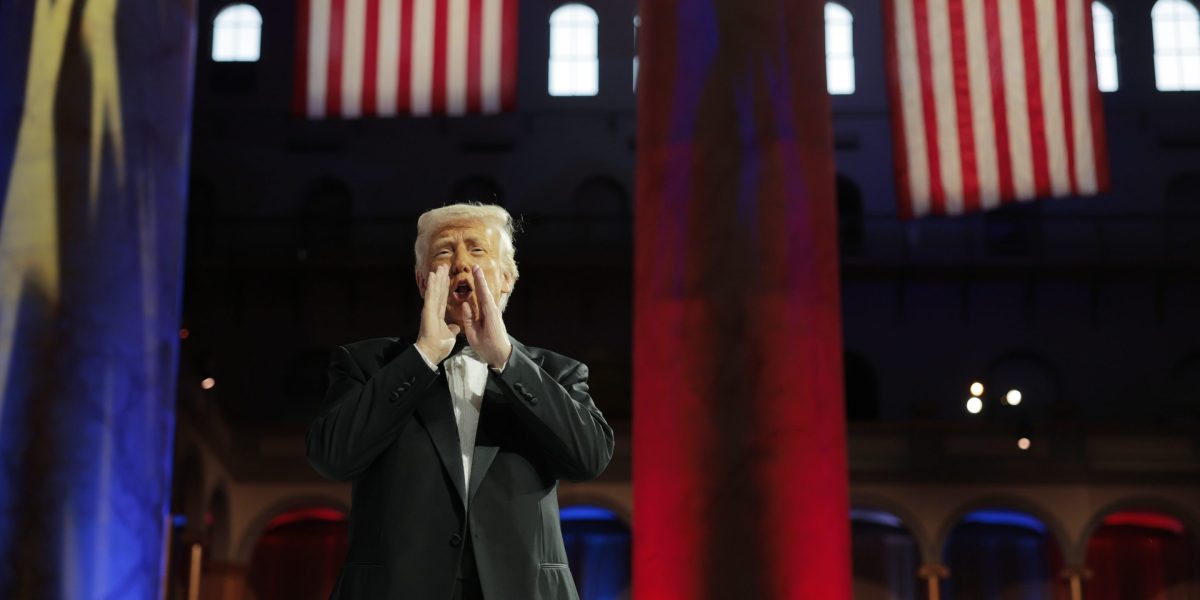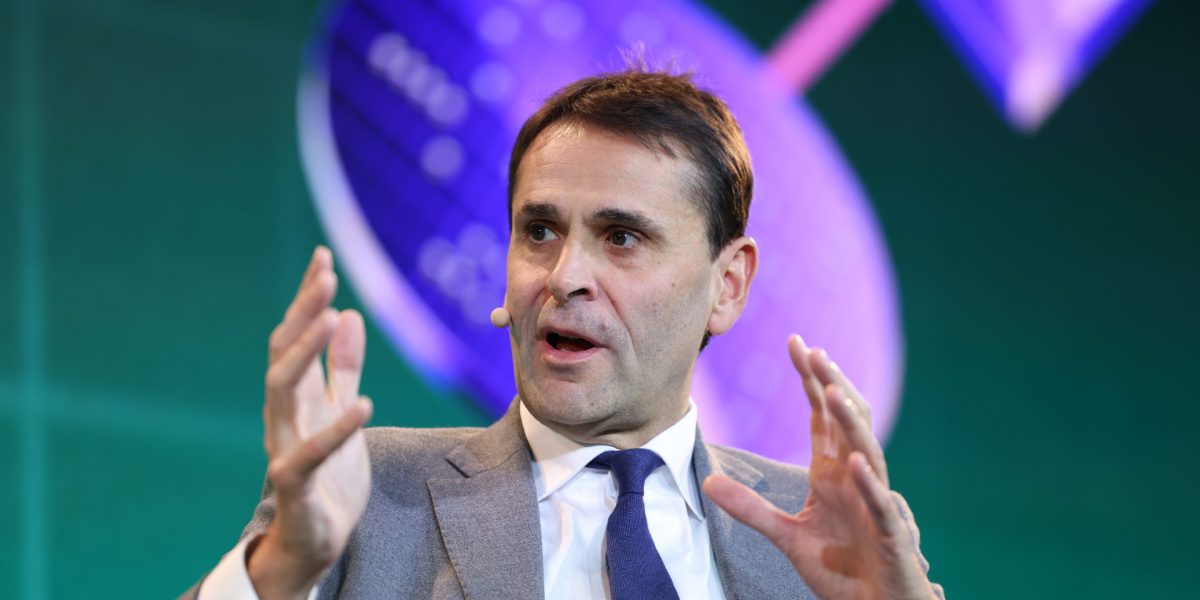Hello and welcome to Eye on AI. In this edition: LinkedIn chief product officer Tomer Cohen talks about the future of work and how the Microsoft-owned professional sbocial network is using AI to make the lives of recruiters and job seekers, hopefully, better…OpenAI closes the largest venture capital funding round ever…Big Pharma learns to share data…and London startup Synthesia grants actors equity in exchange for their likeness. Is it a model for solving AI’s IP conundrum?
If you want to know how AI is changing the nature of work, LinkedIn offers a good vantage point. The Microsoft-owned professional social network is a key hub for job seekers and recruiters—every minute, 10,000 people apply for a job through the platform and seven people are successfully hired on it, according to the company. That means it has lots of data on what roles companies are hiring for and the skills they are looking for. LinkedIn is also a good lens through which to examine how AI is altering the nature of looking for work.
The person ultimately responsible for rolling out AI product features at LinkedIn is Tomer Cohen, the company’s chief product officer. I recently sat down with Cohen at LinkedIn’s London office to chat about AI’s impact on job seekers, recruiters, and on LinkedIn’s own platform.
70% of skills in most jobs will change by 2030
Cohen started out by telling me that the company’s research suggests that 70% of skills used in most jobs will change by 2030, with AI being a big driver of those changes. That’s only four years from now. And there are already signs of big shifts happening. LinkedIn also publishes an annual report called “Jobs on the Rise” about which roles are seeing the most growth in job listings in specific geographies. This year, 70% of the roles seeing the fastest growth were new to the list. And what was the most in-demand role on the list? Well, perhaps not surprisingly, it was “artificial intelligence engineer.”
With roles potentially morphing so quickly, Cohen says, wise employers are starting to think less about the specific roles they need to fill—and in fact, are deconstructing some traditional roles—and more about what skills they need their employees to have both today and in the future. So this year, LinkedIn produced a new report called “Skills on the Rise.” Again, not surprisingly, it turns out “AI literacy” ranks as one of the most sought-after skills. But so too do broad, human-oriented skills such as “innovative thinking,” “problem solving,” “strategic thinking,” “public speaking,” “conflict mitigation,” and “relationship building.”
For Cohen, the most striking stat from LinkedIn’s research is that people entering the workforce now will likely have twice as many roles in their career as someone who entered the workforce 15 years ago. “If there was ever a time to build a growth mindset and emphasis on adaptability and agility and the ability to learn and shift between roles, it’s now right,” he says. Formal college and university education is going to matter much less than it did before—at least in terms of what degree people actually get. Instead, smart employers, he says, are going to be looking for life-long learners who can quickly acquire new skills and adapt to new responsibilities.
Learning to let employees learn to learn
Cohen used the example of how AI was rapidly allowing the creation of a new role that he calls “the full stack builder”—by which he means someone who can, with the help of AI, perform functions that were previously siloed into different roles and functions, including research and development, design, engineering, and product.
He says the most successful companies during this AI transition will be those that give their employees the time to learn skills and experiment with building things with AI. He also notes that there is a tension because time spent learning is often time away from actually doing the day-to-day work and because not all experiments in trying to build things with AI will be successful. But he says companies need to find this balance. If anything, he says, they should tip the scale in favor of helping employees learn AI skills.
“If you are over-indexing on performing [as opposed to learning], you will be behind,” he says. “Giving people space to learn is critical. You have to transform your own workforce. If in one year’s time, you are disappointed that your workforce is not ‘AI native,’ it is your fault [for not giving them time to learn AI skills.]”
Recruitment becomes an AI vs. AI game
I asked Cohen about complaints that AI was having a detrimental effect on the recruitment process. I’ve heard companies say candidates are using generative AI to apply for many more jobs than in the past, so that they were being inundated with applications. What’s more, more people were using generative AI to burnish their CVs and cover letters, making applicants appear more homogenous and making the screening process more difficult—forcing employers in many cases to turn to AI to do the initial screening of applicants.
Job seekers, on the other hand, complain that the way recruiters are using AI may not give candidates a fair shake—especially if those AI tools are not set up to take into account the shifting emphasis towards softer, harder-to-assess skills that Cohen talked about. The use of AI tools for initial screening interviews, something many companies now use, can feel dehumanizing for job seekers—and might unfairly disadvantage candidates who would be good hires but are flustered by doing the video interview with an AI bot. (Worse, in some cases the AI screening tools may harbor hidden biases that even the companies using them may not be aware of.)
Cohen acknowledged that these were problems. But he said LinkedIn’s AI tools were hopefully designed to help counteract some of these trends. For instance, he says it is a tough job market right now in most of the developed world. As a result, many job seekers are feeling a bit desperate and generative AI has in some ways made it easier for people to apply for jobs that might not be the best fit for them. LinkedIn now has AI-powered tools that help a candidate decide how good a match their skills are for a role, providing them with a percentage for how closely they match what the employer is seeking. Cohen says that more than a third of job seekers on LinkedIn use this tool. LinkedIn has also revamped its search process using generative AI, so job seekers no longer need to use keywords that might match what is in the job description and instead can simply describe in plain English what sorts of jobs they are looking for.
The company has also debuted an AI-powered coaching tool that people can use to practice work conversations and receive AI-generated feedback from a coaching model specifically trained to give the sort of feedback that an executive coach might provide. The tool, which works with both voice and text, is mostly designed for the kinds of interactions that an employee and a manager might have—giving challenging feedback, or conducting a performance review, or discussing work-life balance with a manager. But it could also be used to practice for a job interview. The tool is available in English to LinkedIn Premium subscribers.
When it comes to recruitment, LinkedIn has used generative AI to power outreach to candidates. These AI-crafted messages result in a 40% higher response rate and the candidates also respond 10% faster than without AI-assistance, Cohen says. And just this month the company launched its first “AI agent”—called “Hiring Assistant”—that is designed to do many of the tasks that a junior recruiter might. “Everything from sourcing all the way to reaching out to candidates will be automated for [recruiters], so they can focus on those phone calls and interactions and meetings with the candidates,” he said.
The agent has been piloted by some big companies, including SAP, Siemens, and Verizon. Digital infrastructure company Equinix, which was one of the initial users, reported that using the AI agent allowed each of its human recruiters to increase the number of open roles they can handle at a given time from an average of five to an average of 15.
That’s the kind of productivity boost that makes business executives grin. But I’m not convinced companies are taking on board Cohen’s message about life-long learning and finding ways to transform their existing workforces for a future where work is organized around a dynamic set of skills, not roles. Too many companies, particularly in a job market that favors employers, find it easier to fire workers and then hire new ones with experience that seems to exactly match a job description—rather than figure out how to reskill their existing workforce. What’s more, existing recruitment processes are generally poor at assessing people for the kinds of soft skills—adaptability, learning efficiency, flexibility, and resilience—Cohen says will matter most in this brave new world. There’s an opportunity there for companies that can develop and deploy such assessments first.
With that, here’s the rest of this week’s AI news.
Jeremy Kahn
jeremy.kahn@fortune.com
@jeremyakahn
Before we get to the news, if you’re interested in learning more about how AI will impact your business, the economy, and our societies (and given that you’re reading this newsletter, you probably are), please consider joining me at the Fortune Brainstorm AI London 2025 conference. The conference is being held May 6-7 at the Rosewood Hotel in London. Confirmed speakers include Mastercard chief product officer Jorn Lambert, eBay chief AI officer Nitzan Mekel, Sequoia partner Shaun Maguire, noted tech analyst Benedict Evans, and many more. I’ll be there, of course. I hope to see you there too. You can apply to attend here.
And if I miss you in London, why not consider joining me in Singapore on July 22 and 23 for Fortune Brainstorm AI Singapore. You can learn more about that event here.
This story was originally featured on Fortune.com
Source link


 Entertainment8 years ago
Entertainment8 years ago
 Politics8 years ago
Politics8 years ago
 Entertainment8 years ago
Entertainment8 years ago
 Entertainment8 years ago
Entertainment8 years ago
 Tech8 years ago
Tech8 years ago
 Tech8 years ago
Tech8 years ago
 Tech8 years ago
Tech8 years ago
 Politics8 years ago
Politics8 years ago






